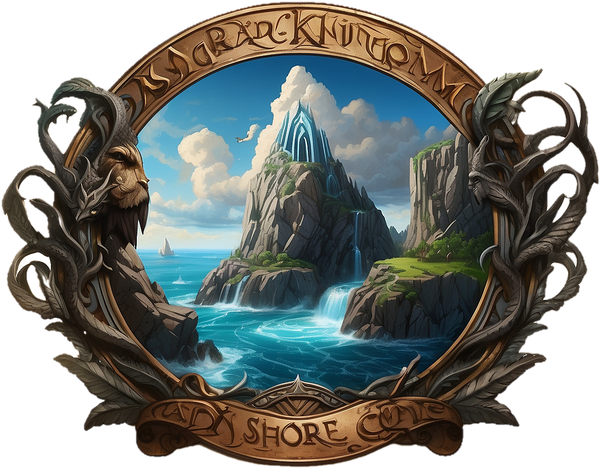Echoes of the North: The Untold Role of Music and Poetry in Viking Life
Share
The fire cracked and hissed as the wind clawed at the walls of the longhouse. Outside, snow fell in silence. Inside, the hush was sacred, not of fear, but reverence. All eyes turned to the skald as he stepped forward, the amber light casting shadows over the runes carved deep into the wooden beams above. He did not speak. He sang. And as his voice rose and fell, the hall seemed to breathe with the memory of warriors long gone.
This was not entertainment. This was legacy.
The Skald: Memory-Keeper of the North
To be a skald in the Viking world was to hold power beyond steel. These poets were more than performers; they were historians, advisors, and myth-weavers. A noble household was not complete without one. Kings kept skalds not just for glory, but for survival. It was through their words that reputations were forged, alliances remembered, and shame endured.
A hero could win a hundred battles, but it was the skald who made him immortal.
They could bless a name with verses of fire, or bury it under stanzas of scorn. Their poems could be weapons, sharper than blades and longer lasting than shields.
Wordcraft and Weaponry: The Art of Skaldic Verse
Skaldic poetry wasn’t a simple rhyme. It was a mental battleground of structure and style. Poets used intricate forms, internal rhymes, and kennings — metaphorical compounds like “whale-road” for sea, or “battle-sweat” for blood. Each line was a puzzle of sound and meaning, a layered map only the trained could read.
The greatest skalds weren’t just performers; they were scholars of sound, bending language like iron at a forge.
To learn skaldcraft was to apprentice in memory, music, and myth, a task as grueling as sword training, and just as essential to the soul of the North.
Instruments of the North: Music Beyond the Mead Hall
Yet not all Viking sound was voice. Instruments played a key role in the rhythm of Norse life.
Lyres plucked in corners of quiet homes. Bone whistles carried on the wind during hunts. Panpipes, flutes, and even drums beat during dances and rituals. And then there were the horns — long, curved lur horns — that called ships to war or warned villages of danger.
Each had its place. Each had its own song.
Imagine a child hearing the hollow tone of a flute as dusk settled over the fjord. Or the deep call of a war horn echoing through mountain valleys, stirring courage in the hearts of those who stood together.
Viking music was not background noise. It was woven into the very breath of their world.
Odin and the Song of Sacrifice
Poetry was not just tradition. It was a myth. Divine.
Odin, the Allfather, sacrificed himself not for gold or power, but for wisdom. He hung from the World Tree, Yggdrasil, pierced and alone, to learn the secrets of the runes — the foundation of language, poetry, and magic. He drank the Mead of Poetry, stolen from giants, to give mortals the gift of inspiration.
Every skald knew they spoke with echoes of Odin in their lungs.
To recite a poem was to reach toward the divine. To create music was to stir the sacred. The Vikings didn’t just hear songs; they believed in them.
The Living Legacy of Sound
Though centuries have passed, the echoes remain. Viking sagas survived not by chance, but through the fierce loyalty of those who spoke them aloud. Storytelling passed from mouth to mouth like fire in the dark, until ink caught it, and it burned on the page.
Today, every rune unearthed, every saga read, is a whisper from that world.
The voices of the North are not gone. They endure, in the skald’s rhythm, the lyre’s whisper, and the sacred names hidden within Yggdrasil’s roots.
The Final Note
Long after the axes dulled and the gods fell quiet, the sound of a story still carries.
In a world of frost and flame, it is the song that remains.
